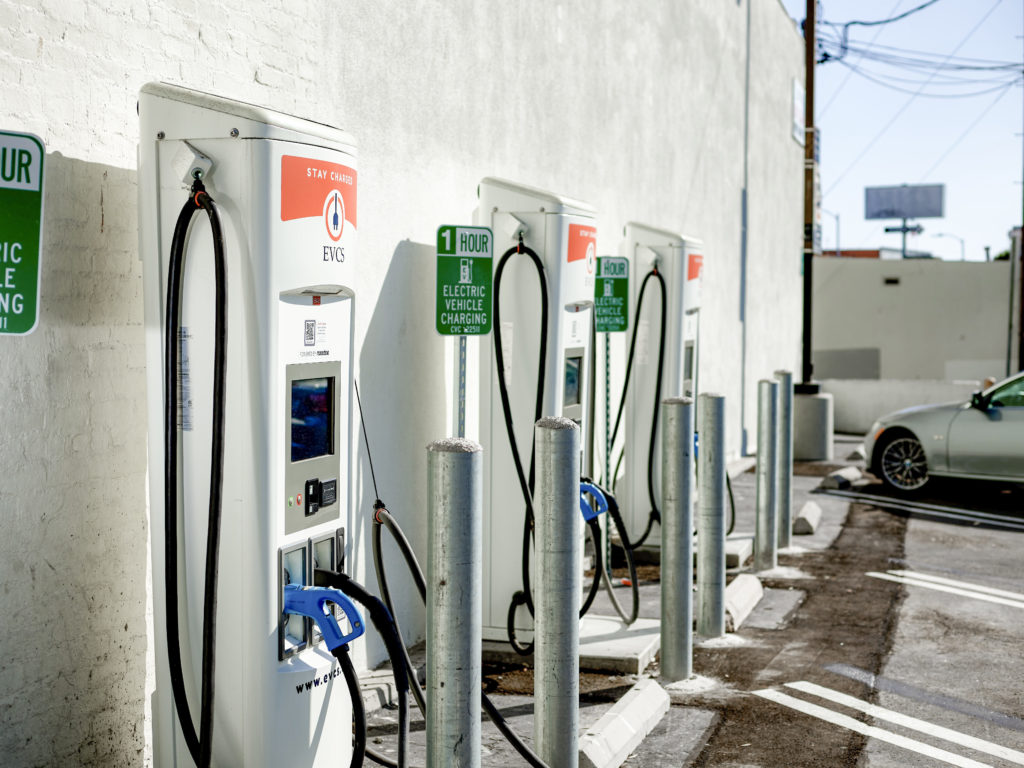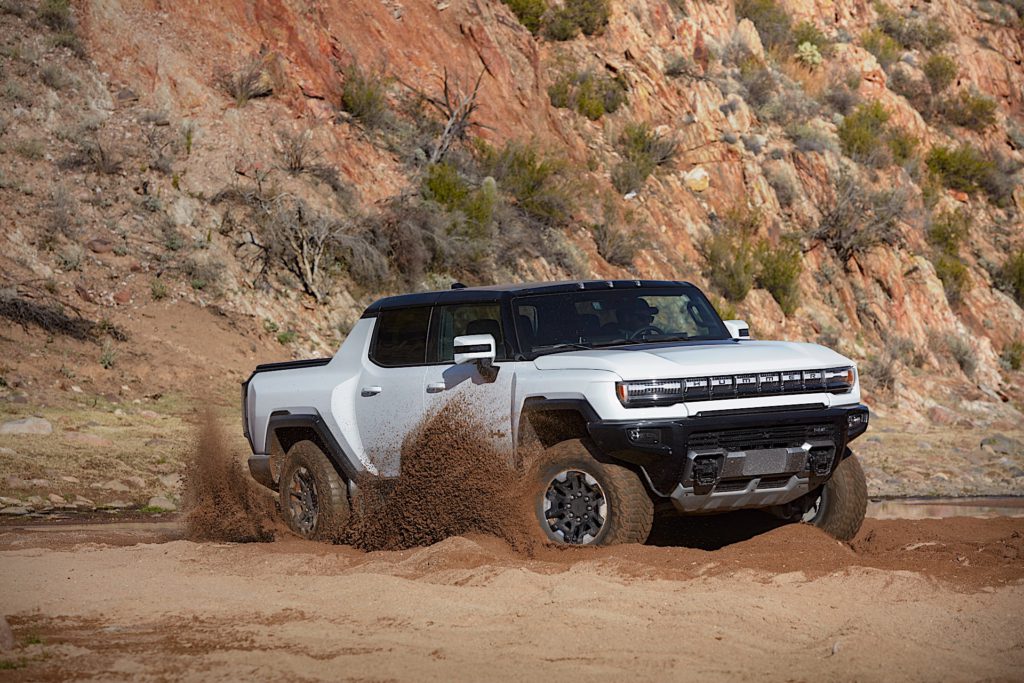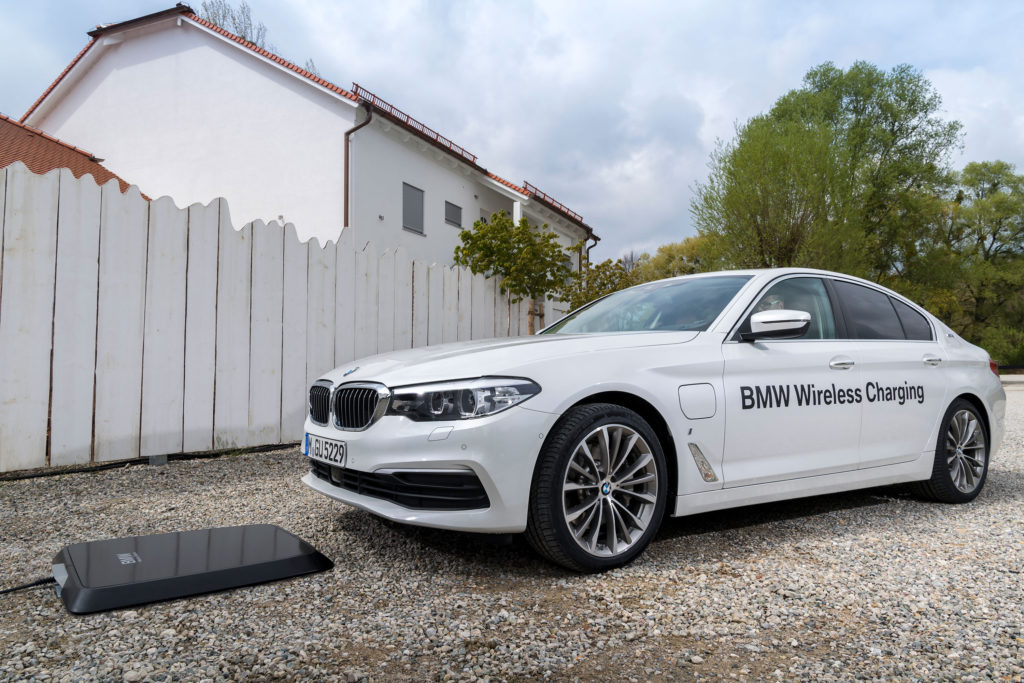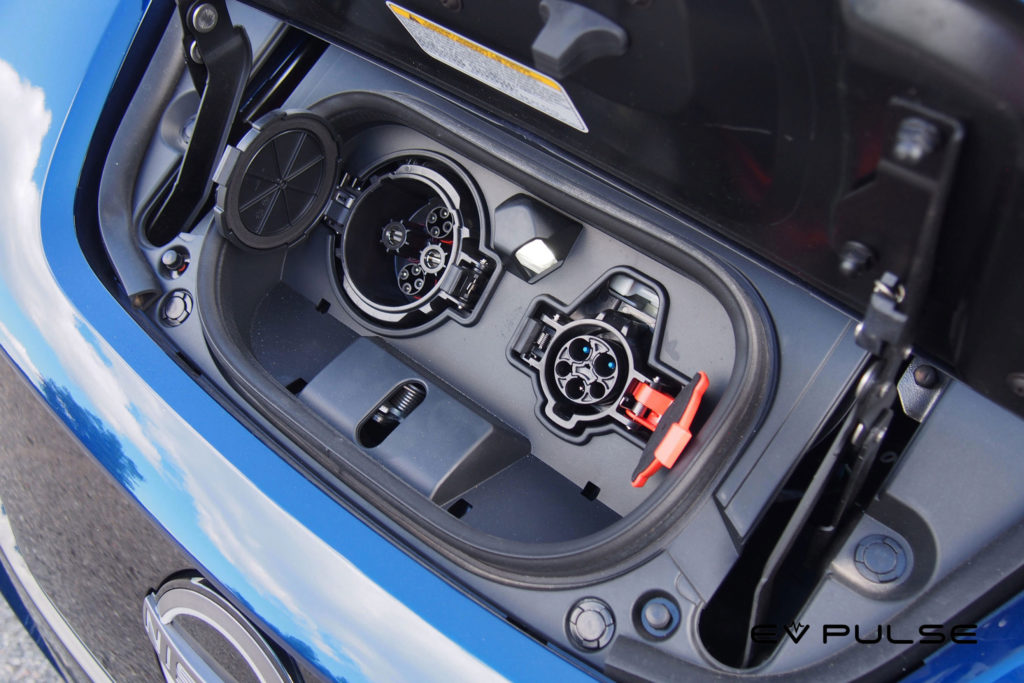From charging rates to connector types and everything in between, get ready to learn about the vagaries of electric vehicle charging. There are several ways you can juice up your EV and in this article we’ll cover the three main charging types, plus a bonus technology that’s an up-and-coming gamechanger. We’ll also detail all the different connectors you may come across.
Level 1 charging
Level 1 charging is the simplest way to replenish your electric vehicle, though it is by far the slowest. This uses 120-volt alternating current electricity, or AC for short. Basically, this is what flows from the standard outlets in your home or garage. Many EVs come with a Level 1 charger as standard equipment, so you can plug in and juice up just about anywhere, like mooching power from a friend or family member when you go for a visit.
Sidebar: we call these units “chargers,” but technically they’re EVSEs, or stands for Electric Vehicle Supply Equipment. Not to get tangled in the weeds, but the real charger is part of your EV’s electrical system, this equipment simply supplies the power safely. So, know that when we talk about “chargers,” we’re actually speaking of EVSEs. Sidebar ended.
CHECK THIS OUT: Do I need an EV charger at home? EV Basics No. 5
Ideally, however, you’ll never Level 1 charge your EV, because it’s sooooo slow. Depending on the vehicle, it’ll get you 3, maybe 5 miles of range per hour, which, in the grand scheme of things is horrible, though it is still better than walking. Depending on the situation, Level 1 charging as an option of last resort, one best left for emergency situations. About the only case where frequent Level 1 charging makes sense is with plug-in hybrids. Their batteries are much smaller than the ones in all-electric vehicles, so they charge up a lot faster.
Level 2 charging
Next up we have Level 2 charging, which is perfect for everyday use. You get home from work or running errands, you plug in and your EV will be fully juiced by the next morning, or much sooner than that if you didn’t run the battery way down. Best of all, Level 2 charging does this without stressing the battery, which can be an issue with DC fast charging, but more on that in a bit.
Now, there can be a downside to Level 2 charging at home, and it’s potentially a big one: cost. You may have to pay for the charger itself – they’re usually not cheap – and then, unless you’re super handy, you often have to shell out more money for an electrician to install the charger because a new, 240-volt circuit may have to be run from your power panel to the place where you want to charge your EV. Be aware of potential additional costs, which can add up to thousands of dollars.

If you’re lucky, however, the EV you buy may come with an EVSE that has an option to double as a Level 2 charger by swapping out the plug. And, if you’re really lucky, your garage will already have a NEMA 14-50 outlet or what you may call a “clothes dryer plug.” If you have both of these, good news, you’re in business, no need to spend more. That said, keeping a portable charger in your vehicle is never a bad idea, so consider keeping one at home and another in the trunk.
As mentioned, Level 2 charging is ideal for everyday use, really, the best all-around option, but if you’re on a road trip and need to juice up your EV, don’t seek out a Level 2 charger unless it’s the one at your hotel or it’s your only option. Though reasonably speedy, they still take hours and hours to replenish a vehicle’s battery. In this situation what you want is a DC fast charger.
DC fast charging
Sometimes erroneously called “Level 3” chargers, these power boxes are built for speed – they’re the cheetahs of the charging world. Depending on the unit, they can push out anywhere from 50 to 350 kW of juice, enough to replenish a depleted battery pack in just minutes.
Attached to an appropriate DC fast charger, cars, like the Hyundai Ioniq 5 and Kia EV6, for instance, can go from a 10% state of charge to 80% in just 18 minutes. That’s barely enough time to use the bathroom and grab a snack.
When DC fast charging it’s important to know how much power your vehicle can take. If you drive, let’s say, a Volkswagen ID.4, it tops out at 135 kW, so there’s no sense plugging into a 350-kW charger. You absolutely can do this, it won’t damage the vehicle at all, but it’s not going to charge any faster than the max rate. The polite thing to do is hook to a 150-kW charger and save the 350 for drivers that can take advantage of all that power. We have a full EV Basics video explaining the differences between kW and kWh, so make sure to check that out when you get a chance.

Anyway, the speed of DC fast charging is unmatched, but it does have two significant downsides. One, regular use can degrade your vehicle’s battery pack, so be aware of that if you plan on making cross-country drives in your EV every other week. And two, DC fast charging isn’t cheap. It may still be a bargain compared to gasoline, but you’re practically guaranteed to pay A LOT more per kWh than you will Level 2 charging at home, and this makes sense because it costs BIG MONEY to install a DC fast charger – tens of thousands of dollars or more – and whoever shelled out the cash for that probably wants to make it back at some point.
Wireless charging
Lastly, there’s one more option to talk about: wireless charging. As you might imagine, this EV-energizing technology requires no cables or connectors. You just park over top a special plate, and the system sends electricity right into your vehicle’s battery. It’s that simple.
Wireless charging technology from WiTricity, the sponsor of our EV Basics series, makes life with an electric vehicle even easier. But beyond the convenience of not having to plug in, their system also supports vehicle-to-grid and bi-directional charging, so your EV can feed electricity directly into your home’s wiring system if there’s a blackout or even the broader power grid during times of high demand. Of course, this is something certain hardwired EV chargers can do, but only if they’re plugged in. Should you forget to click the connector to your vehicle, you won’t get these benefits.

WiTricity’s wireless charging systems use a technology called magnetic resonance, which makes them just as fast, efficient, and safe as Level 2 charging with a cable, so really, there are no downsides to cutting the cord. For more information about WiTricity or wireless charging technology, follow the link on screen or in the description box down below.
Connecter types explained
Next, let’s cover charging connectors, so you know the difference between a CCS plug and CHAdeMO.
In North America, there are four types of Electric vehicle plugs in common use. Level 1 and Level 2 charging have the same five-pin connector, the so-called “J Plug” or “SAE J1772.” DC fast charging uses the Combined Charging System connector, CCS for short. This looks like the J Plug but with a couple larger terminals added to the bottom. Almost every type of EV sold in America can accept a J Plug and/or CCS connector. Both standards are well supported, so you should have zero issues.
Next, there’s CHAdeMO, which is an odd-looking design that was developed in Japan. This DC fast charging connector is used on very few vehicles. In America, the only car I can think of that has a CHAdeMO port is the Nissan Leaf, so unless you own a one of these cars – or maybe a Nissan dealership – you’re probably not going to encounter CHAdeMO very often. In fact, the newer Nissan Ariya doesn’t even support this dated standard, so feel free to forget about it right now.
SEE ALSO: Hybrids vs. plug-in hybrids vs. electric vehicles: EV Basics No. 6
Remember when we said “almost” every EV supports a J Plug? Well, of course, we can’t talk about connectors without mentioning Tesla’s proprietary design, which is everywhere because it’s what comes on Tesla vehicles. Elon Musk’s configuration looks kind of like the J Plug, but slightly flattened.

Because of its unique shape, the Tesla connector only works with Tesla chargers. Unlike other EVs, the same plug shape is used no matter if you’re slow charging or fast charging. Adapters are available that allow the Model S and its kinfolk to charge at EVSEs equipped with either J Plug or CCS.
And, while adapters like this one allow non-Teslas to recharge at Tesla slow chargers, no such capability exists for fast charging. Elon Musk’s proprietary charging port design is one of the reasons you can’t juice up other EVs at a Tesla Supercharger, though corporate politics are the biggest hurdle. Maybe someday Elon will open his industry-leading charging network to non-Tesla EVs…
Conclusion
You should now be familiar with the different EV charging options out there, when you should use them and what their disadvantages are. We also covered various charging connectors, so they shouldn’t be confusing when you encounter them. Hopefully you enjoyed this feature and learned a few things.
